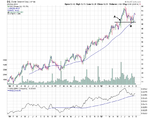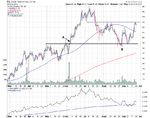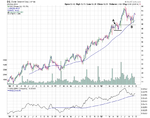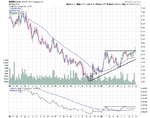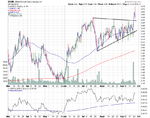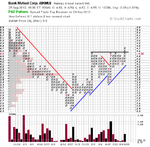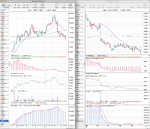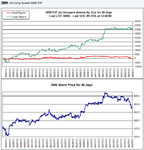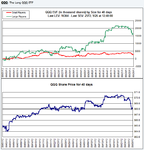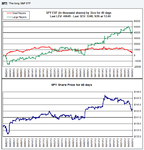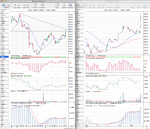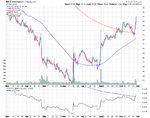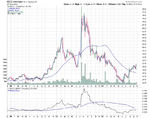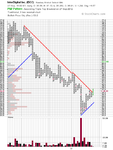Re: DG
I was not thinking of buying this, but would like to see how it works out in reality.
Thanks. I see the problem that although Weinstein says to look for a buy on a pullback to the breakout, which in this case is $48, a pullback by definition means you face a new recent high, in this case at $53, as new resistance. On a weekly chart, with your cautionary notes, it looks plausible, though on a daily it looks less enticing.A note of caution on DG that I can see, is that it has yet to break above the three month resistance at 53, which it pulled back from yesterday. So personally I'd want to see a close above that for a continuation as the 50 day MA is still falling and the risk reward isn't great as it's over 5x the 200 day Average True Range to the stop distance.
I was not thinking of buying this, but would like to see how it works out in reality.

